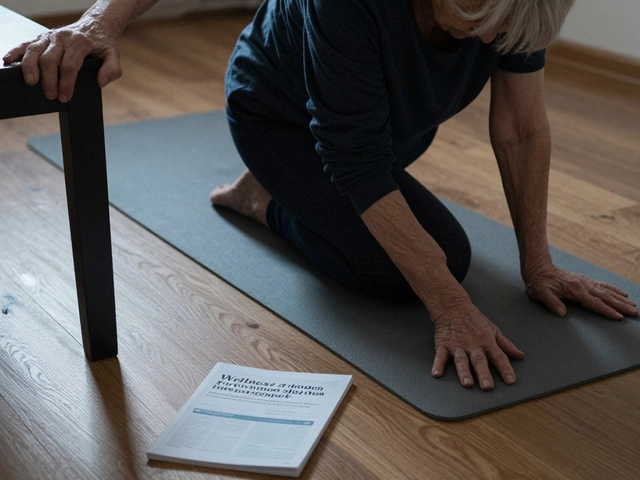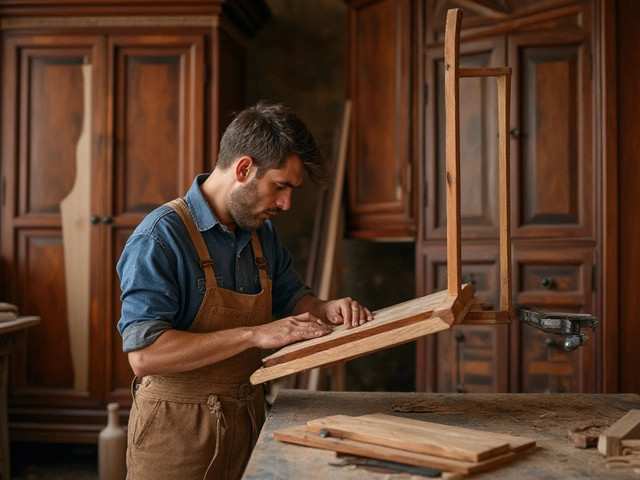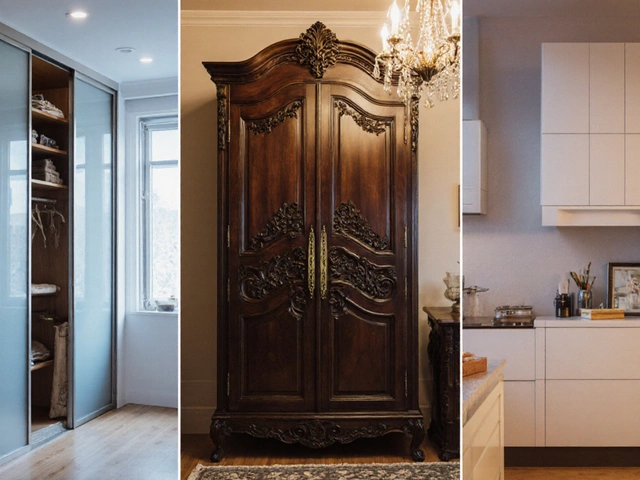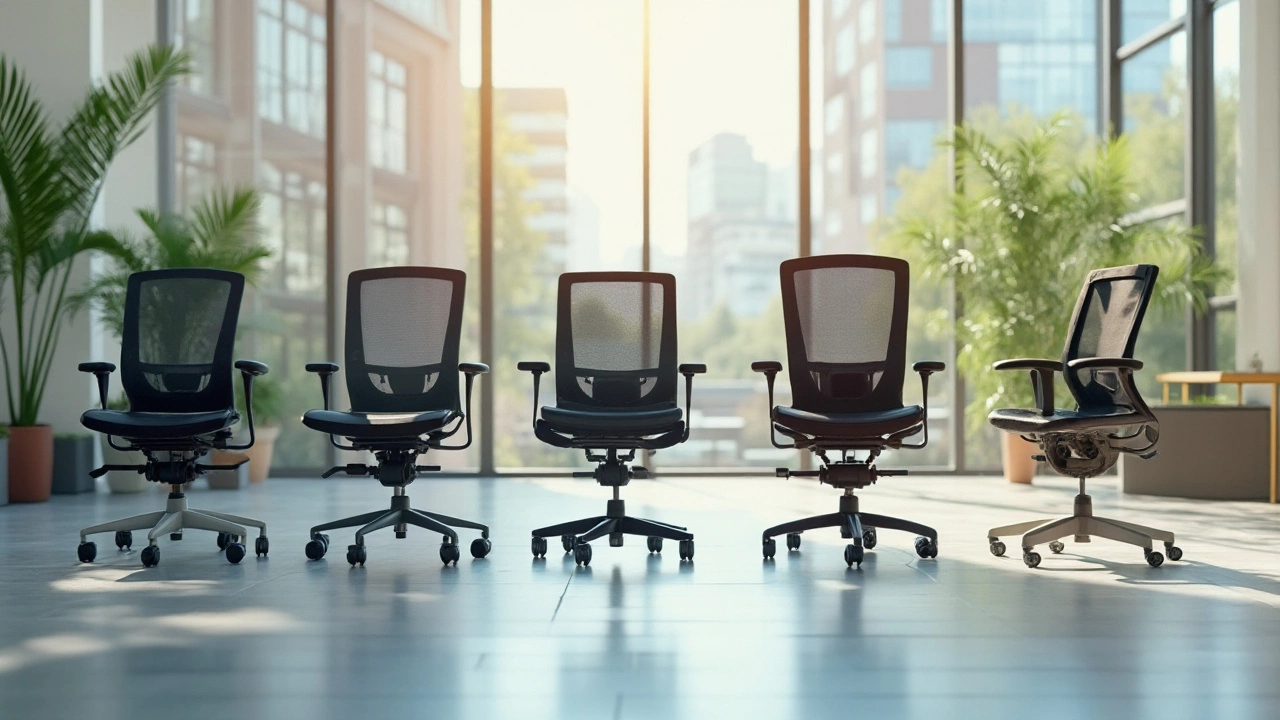 1
Feb,2025
1
Feb,2025
Your office chair is more than just a piece of furniture. It's a crucial component of your workspace that can make or break your comfort and productivity. Yet, it's often overlooked until that dreadful creak or sag becomes impossible to ignore. So when does your trusty perch need a retirement plan, and what's the best way to figure that out?
In this guide, I'll take you through the ups and downs of office chair lifespans, highlighting the telltale signs of wear and what you can do to extend a chair’s usability. Whether you're seeking the plush embrace of a high-end model or a straightforward task chair, knowing when and why to make the swap can lead to better posture, fewer aches, and world-class productivity.
So, let's dive into the nitty-gritty of office chair life cycles and what you can do to ensure your seat of power remains supportive for as long as possible.
- Understanding Office Chair Lifespan
- Signs Your Office Chair Needs Replacement
- Impact of Chair Design and Materials
- Proper Maintenance for Longevity
- Benefits of Ergonomic Upgrades
- Cost vs. Comfort: When to Invest
Understanding Office Chair Lifespan
When it comes to the life expectancy of an office chair, several factors play a role, one of which is the materials used in its construction. Typically, chairs built from high-quality materials such as aluminum or steel frames, durable mesh, or premium leather, will outlast those made from cheaper alternatives. The frequency of use also matters; a chair that's used eight hours a day, five days a week will wear out faster than one that's used less frequently. It's interesting to note that the average lifespan of a well-used office chair is usually between five to ten years. Of course, how well you take care of it can influence this timeframe significantly.
Another crucial consideration is the design of the chair, particularly whether it includes ergonomic features. An ergonomic chair designed to support proper posture and alleviate stress on your back and shoulders is typically more durable. This durability is often tied to meticulous engineering geared not just for comfort but also for longevity. The more ergonomic adjustments a chair provides, the better it's likely to adapt to different body types and usage patterns, adding to its lifespan. A study published in the Journal of Occupational and Environmental Medicine reported that using ergonomic seating can reduce musculoskeletal disorders, suggesting these chairs may help you stay healthier in the long run.
"Investing in quality ergonomic office chairs may not only reduce employee discomfort but also improve productivity and prolong the chair's lifespan," says Dr. Karen Jacobs, an occupational health expert.
Maintenance also plays a pivotal role in extending a chair's life. Regular cleaning, as well as timely repair of minor issues, can prevent small problems from escalating into significant damage. Vacuuming upholstered areas, checking wheels for debris, and ensuring all bolts and movable parts are tightly fastened should be part of routine upkeep. Additionally, you may want to consider protective measures such as waterproof covers or armrest pads. While many people neglect these simple tasks, they can make a world of difference in the longevity of your office chair.
The nature of your workspace can also impact the lifespan of your chair. Environments with hard floors may wear down caster wheels faster than carpeted areas. Meanwhile, exposure to direct sunlight or damp conditions can cause the materials to degrade more rapidly. To counteract these environmental effects, some people opt for chairs with replaceable parts like wheels or cushions, making it easier to upgrade without replacing the entire chair. A reputable manufacturer with a comprehensive warranty policy often signals a high-quality chair that's built to last.
An interesting fact for companies considering bulk purchases is the potential cost savings over time. While the initial investment in a high-end office chair might seem steep, the reduced need for frequent replacements can be more economical over the long term. As companies expand, understanding the lifespan of office furnishings can aid in making savvy budgeting choices. In Australia, companies often factor these considerations into their procurement strategies to maximize efficiency and employee satisfaction.
Signs Your Office Chair Needs Replacement
One of the most telling signs that your office chair replacement is overdue is physical discomfort. You know, that relentless ache in your lower back that just won't quit, or the twinges in your neck as you try to find a position that doesn't feel like a balancing act on a stack of rocks. Consistent discomfort suggests that the chair can no longer support your body’s natural posture. Over time, the foam and padding that once provided comfort might lose its memory and resilience, leading to uneven seat cushioning and support that feels more like a slab of concrete than a chair.
Another red flag waving at you might be the chair's structural integrity. Maybe you've noticed the chair's base exhibiting a peculiar lean, like a tower struggling against gravity. Check the wheels and casters—they should glide effortlessly across the floor, yet if you're battling every time you push back, it's a hint. Structural issues can stem from worn-out parts, like gas lifts that no longer hold their altitude, making unexpected drop-offs a frequent visitor throughout your day at the desk. Not to mention, in the words of occupational health experts, "A stable and supportive chair is crucial for maintaining optimal productivity," as there's nothing like an unscheduled, ground-ward zoom to break your concentration.
Another sign to monitor is the deterioration in adjustability. Initially, office chairs boast a range of adjustments to tailor your seating position to perfection. Over time however, these adjustments might become redundant or less functional. If the height adjustment lever requires the strength of a thousand lifts or tilting is more of a gamble with gravity, it’s a cue to look for new options. The key to a great office chair is its adaptability to your changing needs and preferences, and if your chair refuses to cooperate, it’s time to part ways. Remember, a chair's lifespan can often correlate strongly with its initial quality and regular usage.
Lastly, it's essential to consider the bruising impact of wear and tear. Regular usage exposes chairs to wear that affects both aesthetics and function. Leather or fabric beginning to peel off, cracked arms, or squeaking sounds are indicators your chair is crying for an upgrade. Fabric that tears easily might expose padding, creating unsightly visuals as well as potential hazards from exposed metal or poking fragments. An office chair's ability to retain its cool, sleek appearance is just as important for your workspace vibe as its functionality is for your comfort.
But what makes a stellar replacement decision is a profound understanding of what kind of chair you're looking to upgrade to. Ergonomic chairs crafted with care and precision often yield much longer lifespans than basic models that focus far less on user support. Consider initial costs versus long-term comfort to find the best fit. As one ergonomic expert aptly mentioned, "Investing in a quality chair is a commitment to your health and productivity," and this couldn’t be truer.
Impact of Chair Design and Materials
When we talk about office chairs, the design and materials used are the unsung heroes dictating not only how long they last but also how much comfort they offer. Often, it's easy to overlook the importance of these aspects, focusing instead on the brand or the price tag. However, understanding their impact can significantly enhance your seating experience and the lifespan of your chair. The design of an office chair often determines how well it supports the body, directly affecting user posture and comfort. Ergonomic chairs, for instance, are crafted with user anatomy in mind. They offer adjustable features like lumbar support, height adjustments, and armrests, all of which are crucial for maintaining a healthy posture during long hours at the desk.
The materials used in a chair, meanwhile, play a pivotal role in its durability and the comfort it provides. Mesh, leather, and fabric are among the most common materials. Mesh chairs are praised for their breathability, making them quite popular in warmer climates such as in Melbourne. Leather, while offering a premium, executive look, is durable and easy to clean but may not be as breathable, which can be a factor during long sittings. Fabric options often offer a middle ground between comfort, breathability, and cost. According to a report by the Business and Institutional Furniture Manufacturers Association (BIFMA), chairs made from high-quality materials can last up to 10 years, emphasizing the phrase “you get what you pay for.”
The Role of Ergonomics
Ergonomic design is not just an industry buzzword; it's a critical factor in preventing musculoskeletal issues. Poorly designed chairs can lead to back pains, neck strains, and a host of other health problems. Ergo-friendly designs incorporate functionalities like tilting mechanisms, adjustable head and neck rests, and balance support, which collectively contribute to a comfortable sitting posture. A well-thought-out design paired with quality materials does more than contribute to comfort—it aids in prolonging the chair's life. Each adjustment made to fit your personal sitting habits reduces strain on the chair's components, minimizing wear and tear over time.Material choice extends beyond mere aesthetics. The choice between a breathable mesh and a robust leather is more than just a stylistic decision; it speaks to personal needs and workspace dynamics. For example, a colorfully upholstered chair might ignite creativity in a designer’s studio, while a sleek leather chair might command respect in a corporate boardroom. Choosing the right material directly impacts both productivity and the durability of your investment. Ultimately, selecting a design and material that aligns best with your usage patterns, personal comfort needs, and workspace aesthetics can make all the difference in your daily office experience and the longevity of your chair.
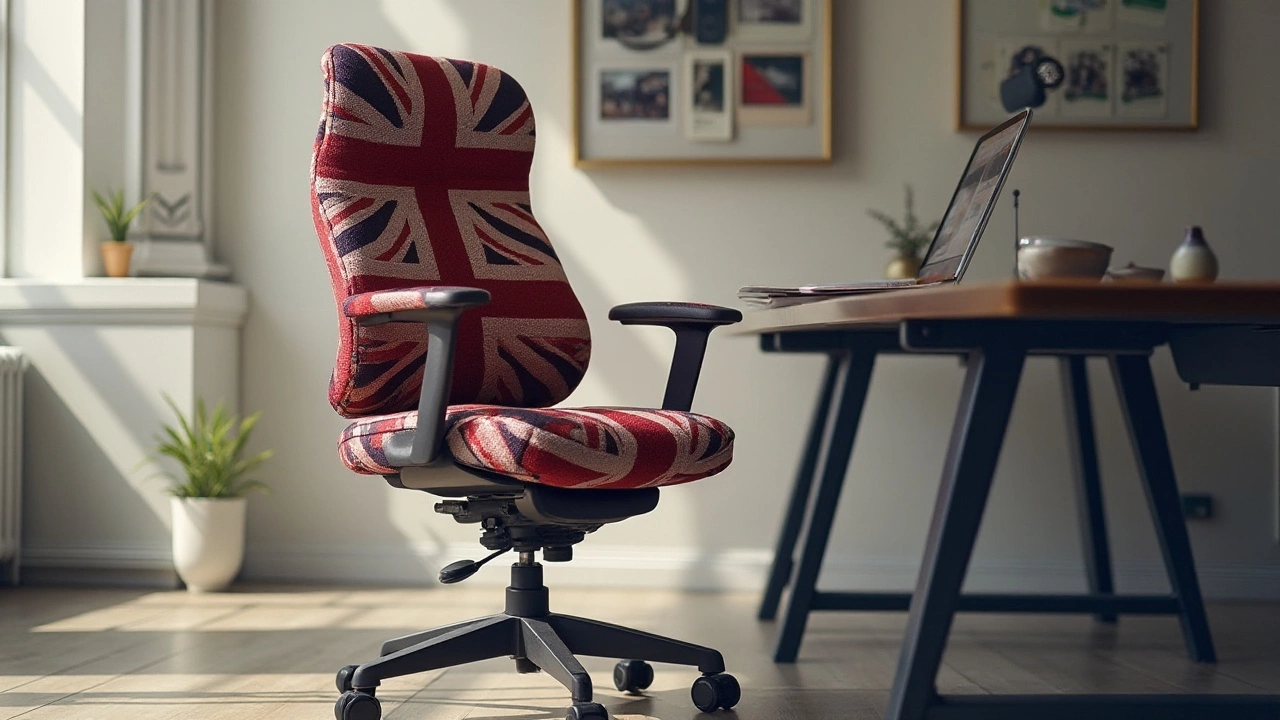
Proper Maintenance for Longevity
Office chairs are a ubiquitous feature in most modern workspaces, contributing directly to the comfort and efficiency of those who use them. Maintaining these chairs is often overlooked, yet with a little attention and care, their lifespan and effectiveness can be significantly extended. Imagine for a moment the relief of having a chair that supports your back and posture impeccably, promoting your health and productivity day after day. Regular maintenance not only preserves the aesthetic and functionality of your chair but also helps you avoid the cost and hassle of premature replacement.
One of the most important aspects of chair maintenance is keeping it clean. Dust and debris can accumulate in the moving parts of an office chair, potentially causing mechanisms to jam or wear out prematurely. Regular vacuuming and the occasional wipe down with a damp cloth can do wonders. For chairs with fabric upholstery, consider a fabric cleaner or upholstery shampoo suitable for the type, ensuring you avoid any substances that could damage the material. Prioritize cleaning any spills immediately to prevent staining and odour development.
Adjustability is another critical feature threatened by neglect. Adjust the chair regularly to ensure that all parts move smoothly. Pay special attention to the wheels. These little guys bear the brunt of your chair’s movement and can collect dirt and grime that hinder their function over time. Use a soft brush or can of compressed air to clean the caster wheels each week and ensure unobstructed rotation. Including a weekly inspection for loose bolts and fasteners is wise, as continual use may cause these to loosen, compromising the stability of your chair.
Lubricating moving parts cannot be understated. If your chair starts making odd noises or feels stiff when you lean back or spin around, that's a sign it's time to bring out the lubricants. A few drops of a silicone-based lubricant can keep the tilt mechanism, gas lift, and wheels functioning smoothly. In an insightful study published by the Furniture Manufacturers Council, regularly lubricated chairs showed a 25% increase in lifespan compared to non-maintained counterparts.
“An office chair is like a car. Treating it with care and performing regular checks make it last longer and perform better.” — Furniture Maintenance Experts Group
Let's not forget the importance of positioning and use. Even the most ergonomic model won’t save your posture if your setup is all wrong. Regularly check that your chair's height aligns correctly with your desk and monitor. Ensure your feet are flat on the floor, and your arms are at a comfortable angle. Overloading your chair can also cause it to wear out quicker, so avoid using it as an extra storage rack for heavy bags or equipment.
Consistent scheduling of these maintenance routines can extend your office chair’s lifespan far beyond the usual expectations. Although office chairs vary in longevity, following these tips can help your favorite model outlast its less fortunate counterparts. While no amount of care can prevent the eventual need for replacement, maintaining your chair diligently ensures it serves you well throughout its designed life.
Benefits of Ergonomic Upgrades
Let's face it: spending endless hours at your desk drooling over spreadsheets or crafting the next Great Australian Novel can take its toll on your body. That's where ergonomic upgrades swoop in to save the day. You may think upgrading to an ergonomic seating option is just a fancy way to part with your hard-earned money, but hold your horses. There's a tangible difference made by a well-designed office chair that conforms to your bodily contours and caters to your every move.
First up, enhanced posture correction is a big win with ergonomic chairs. Most standard chairs lack support, leaving your body to work overtime to maintain balance. Ergonomic designs, on the other hand, provide adjustable lumbar support, essential for keeping your spine in alignment and reducing tension in muscles. Such chairs are often recommended by health professionals for reducing back pain, a common complaint among office workers internationally.
By upgrading, you offer your body stability, minimizing the risk of slouching and the health issues that emerge from poor posture. The comfort and customizability make ergonomic chairs a sound investment for anyone with a desire to maintain their spinal health. Ray Hyman, a well-known ergonomics researcher, once stated,
"Ergonomic furniture is not a luxury, but a necessary piece in the puzzle of overall human health and productivity."
Moreover, consider mobility enhancements. Ergonomic chairs often come with high-quality casters, giving you the freedom to pivot from screen to printer without straining your back or wrists. This added motion capability can ease daily tasks and inherently boost productivity levels. As one might not realize, even something as simple as getting up from your chair can be transformed into a seamless action thanks to adjustable seat height features.
On top of practicality, stress reduction also plays a significant role. After all, when your body is supported and pain-free, you can focus more on your tasks rather than nursing aches and fatigue. Imagine not feeling the drain of a long workday on your back; who wouldn't enjoy that? Reading comparison data between ergonomic and non-ergonomic seating options, researchers found that workers who transitioned to ergonomic setups reported a 48% decline in musculoskeletal problems.
Ultimately, investing in an ergonomic chair isn’t just a splurge for comfort, it's an ally in your journey toward healthier work habits and increased workplace efficiency. Upgrading is a decision wrapped in the promise of long-term benefits that your body will thank you for day in and day out. So why not make the leap?
Cost vs. Comfort: When to Invest
When it comes to deciding whether to invest in a new office chair, balancing cost with comfort can seem like walking a tightrope. On one side, budget constraints might lead you to consider a cheaper, basic model, while on the other, your health and productivity could push you towards a more comfortable, ergonomic option. Understanding your personal and professional requirements is key to making this decision. Investing in a quality chair means looking at it not solely as an expense, but as an investment toward long-term well-being. A study by the Occupational Safety and Health Administration (OSHA) highlighted that workers who used ergonomic chairs experienced a significant decrease in musculoskeletal disorders. This points to a direct link between comfort through ergonomics and overall health improvements.
Choosing the right chair also requires you to consider the amount of time you spend sitting down each day. If you're clocking in several hours daily in the office or at your home desk, comfort plays a critical role. Imagine the repercussions of slight knee pain evolving into chronic discomfort simply because of a stiff and unsupportive seat. The correlation between prolonged sitting and the onset of various health issues has made comfort a more significant consideration than it was previously. Thoughtful ergonomic designs cater to these needs and often come with adjustable features that adapt not just to different body types, but also to varied work tasks.
"The ergonomics of an office chair impact more than just comfort. They influence productivity, focus, and sometimes, even employee retention." - Dr. Aisha Salem, Ergonomic Expert.
Office chair replacement considerations should include both the physical product and the cumulative benefits it brings over time. While it might be tempting to pick a less expensive option initially, the long-term costs of discomfort and potential health issues can exceed the upfront savings. An ergonomic chair, while possibly pricier, often lasts longer and requires replacement less frequently compared to ordinary seating options. As it absorbs the daily wear and tear better, fewer chairs are sent to landfill, making it a more environmentally considerate choice as well.
| Chair Type | Average Lifespan (years) | Price Range (AUD) |
|---|---|---|
| Basic Office Chair | 2-3 | $70 - $150 |
| Ergonomic Chair | 7-10 | $250 - $1,000+ |
When weighing cost against comfort, keeping an eye on potential discounts or sales can also be advantageous. Many reputable retailers offer seasonal sales, during which high-end models become significantly more affordable. Investing wisely means planning for these opportunities and making informed choices based on research and, if possible, firsthand experience. Visiting showrooms and testing out different chairs can help you feel the difference that a quality ergonomic seating option offers. By aligning investment strategies with comfort needs, office workers can ensure that their seating choices contribute positively to their daily work life, ultimately enhancing both their professional output and personal well-being.

